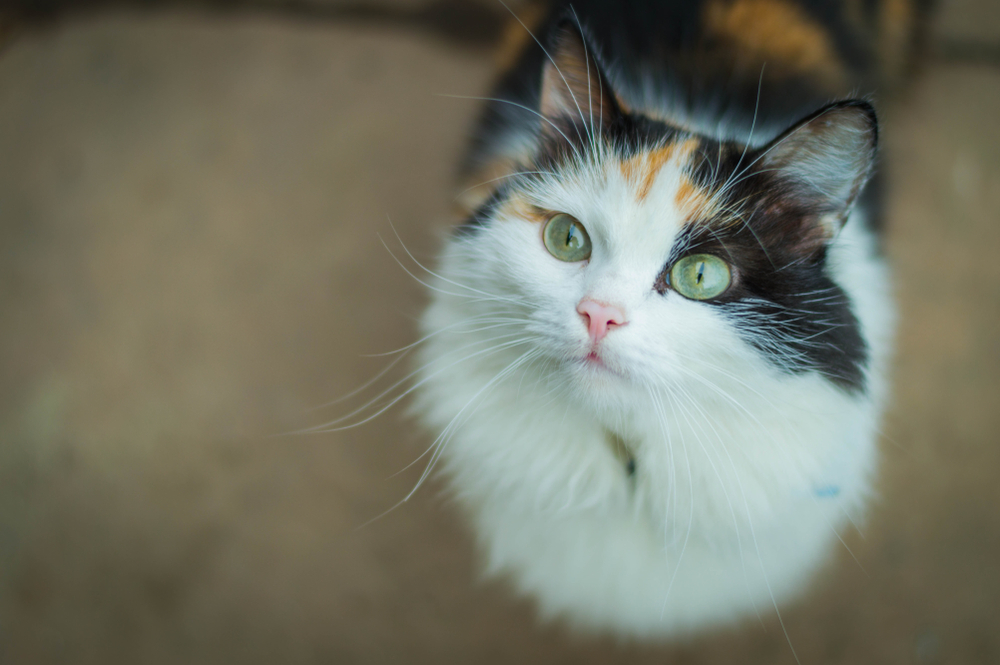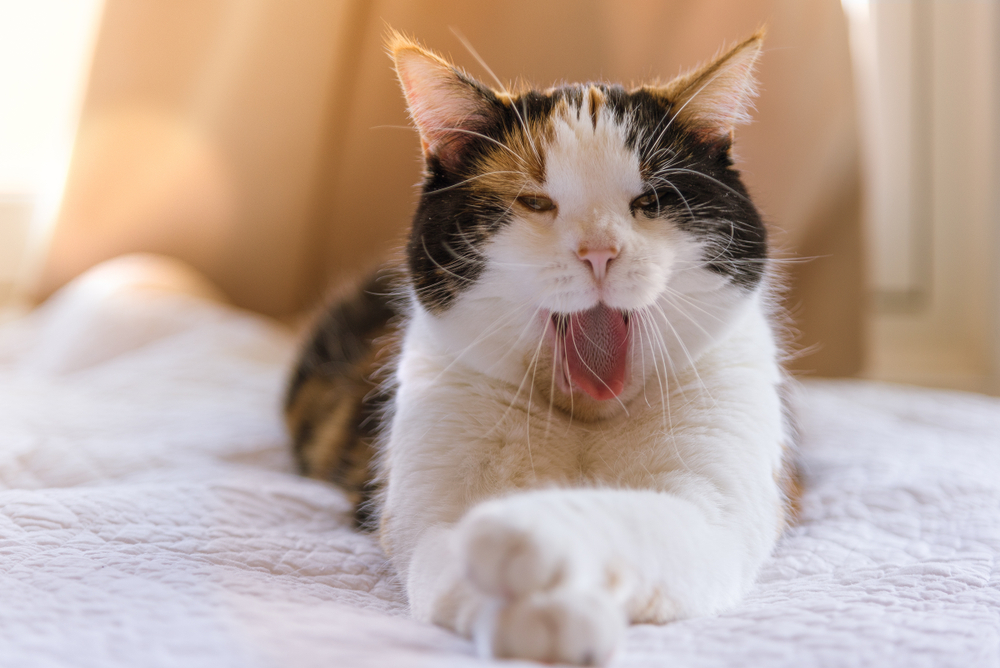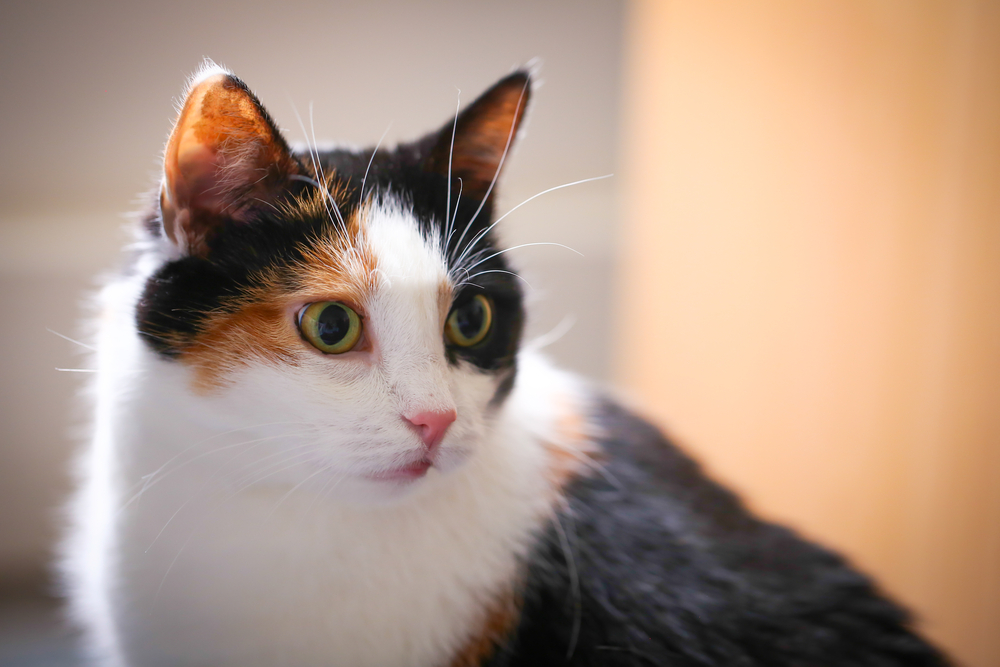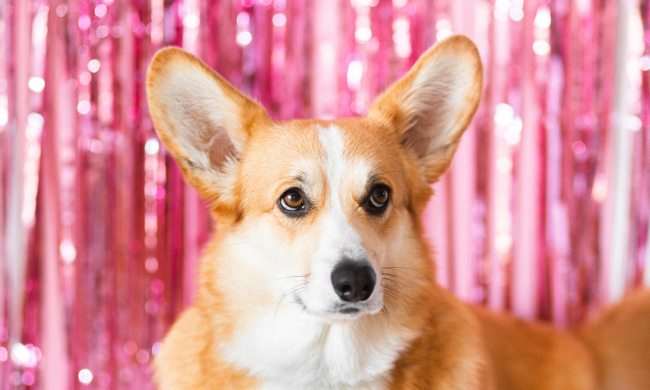Cats come in a variety of colors and coat patterns, ranging from solid white to jet black and everything in between. For a cat to be considered a calico, three different colors must be present in her coat: black, red, and white. Tortoiseshell cats, which are sometimes confused with calicos, don’t have white in their coats. Instead, they’re usually black and red, sometimes seen with a hint of peaches and cream mixed in. On occasion, you’ll see a lighter tortie in shades of lilac and cream, known as dilute calicos. While no official calico cat breeds exist, you’ll often find these colorful fur babies in numerous cat breeds, including Persians, Maine coons, Manx cats, American shorthairs, and British shorthairs. Let’s delve into five interesting facts you should know about calico cats.
1. Most calico cats are female
Did you know that only one out of every 3,000 calico cats is male? Male calicos are so rare that even your local veterinarian will most likely go their entire career without seeing one in person. Here’s why: The gene responsible for your cat’s coloration is located on the X chromosome. Female cats (XX) have a much greater chance of inheriting the unique calico pattern than male cats (XY). But what about those rare males? Sadly, they have an extra chromosome (XXY), and they’re usually sterile.
2. Some consider calico cats to be lucky
In October 2021, Maryland adopted the calico cat as the official state cat. Why the calico? The Baltimore Orioles, Maryland’s Major League Baseball team, wear the same colors (black, orange, and white) on their uniforms. Because of their rarity, male calicos are thought to be particularly auspicious in the United States and the United Kingdom. Calicos are also considered lucky in Japan, with sailors taking calico cats out to sea for protection and good luck. Irish folklore claims that rubbing a wart on a calico’s tail during the month of May will remove it. And some people call them “money cats,” claiming they invite abundance and prosperity into the lives of their owners.

3. A Japanese calico named Tama was made a Shinto goddess
A calico cat named Tama was made the stationmaster of Kishi Station in the Wakayama prefecture, the first feline stationmaster in Japan. In exchange for her services, she received a stationmaster’s cap and a salary of cat food. Ticket sales jumped by over 10%, and an adorable line of Tama-inspired merchandise went up for grabs, allowing the struggling railway station to remain open. Tama’s hard work paid off, as she was knighted by Wakayama’s governor. When Tama passed in 2015 at the age of 16, she was awarded the title “Honorable Eternal Station Master.” According to the Japanese Shinto faith, Tama is now considered the goddess of the Yakayama Electric Railway. Her former co-worker, Nitama, which means “Tama Two” in Japanese, is Kishi Station’s current stationmaster.
4. You can’t breed a calico cat
Because the genetic combination responsible for creating calico cats happens by chance, it’s impossible to breed them. The genes responsible for black and orange fur are also found on the X chromosome. Only if a cat has an X chromosome carrying the genetic sequence for black coloring and an X chromosome carrying the genetic sequence for orange coloring will the black and orange genes combine to create a calico cat. Even if you successfully clone a calico cat, the cloned cat’s color markings will differ from the original cat’s because, in addition to genetics, womb conditions also affect a cat’s coat pattern.
5. No one knows exactly where calicos come from, but it’s probably Egypt
With no official records in sight to document the calico cat breed’s origins, researchers were left in the dark for a long time. Fortunately, Neil Todd, who studied the migration routes of domestic cats, discovered a missing link in the history of the calico cat’s origins. According to Todd, the genetic mutation responsible for red hair in calicos probably originated in Egypt. Later on, calicos migrated to Greece, Italy, and Spain. Once there, they made their way throughout Europe, eventually reaching North America and Asia. Interestingly enough, the calico’s name comes from India, not Egypt. Calicos are named after calico cloth, a woven fabric from Calcutta that’s dyed in a variety of bright hues and intricate patterns.





